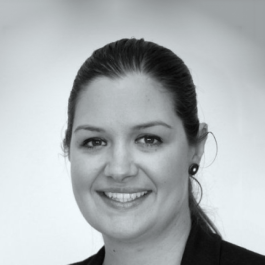
While remote work has brought out a creative streak in many, sparking the formation of virtual workout classes and even remote magic shows, it has blurred the boundaries between work and personal life. For this reason, company leaders are coming up with new ways to encourage their remote team members to maintain healthy work-life boundaries.
For many leaders, keeping employees’ mental health in check has become a top priority, and it requires more than offering up outside resources for them to use. As work-from-home orders continue, leaders are taking the time to meet with team members individually while encouraging them to set aside time to connect with friends and family, or simply unwind on their own. These personal interactions, coupled with companywide virtual events, play a critical role in maintaining a divide between work and life.
While it’s crucial for leaders to encourage self-care, it’s just as important for them to heed their own advice. By taking time off and putting Slack responses on pause, leaders can let their team members know that it’s OK to maintain a divide between work and personal life. And while leaders may not always have a solution for their team members’ problems, it’s important for them to offer support where they can.
As CB Insights Engineering Manager Mariano Wahlmann put it, “People will remember how you acted when they needed you.” In this remote age, simply being there for each other is enough, even if we don’t have solutions to some of life’s biggest challenges.
Built In NYC caught up with Wahlmann and other tech leaders across the city to learn how they’re helping their remote teams maintain healthy work-life boundaries.
Keeping up in the digital world is tough for businesses of any size. Kin + Carta wants to make it easier. The global digital transformation firm serves as an all-in-one management consultancy, product design studio and marketing agency, offering a variety of services ranging from value creation to digital service design.
Head of East Coast Delivery and Operations Paul Clarke plays an integral role in supporting the company’s mission to connect people, data and technology.
What examples do you set as a leader of remote workers to ensure employees feel empowered to create and uphold healthy work-life boundaries?
At Kin + Carta, we are hyper-focused on the well-being of our employees, and we have always seen a healthy work-life balance as part of our identity and culture. We track the morale of our “Kin” as closely as we track the financial health of our engagements, and we have seen a direct correlation between productivity and the morale of our teams.
Leading into the summer, we noticed our employees had taken far less vacation than expected, primarily because of limited travel options as a result of COVID-19. This had the potential to lead to burnout and impact employees’ mental health. As leaders, we decided to set an example and take as much PTO as we would in normal times to encourage our team members to do the same. I personally turn off all work devices on weekends and while on vacation and limit communicating with employees outside of our scheduled work hours. We fully trust and empower our employees to make the right decisions for themselves when it comes to their well-being. With their mentors and people leaders, we support their decisions as best we can to reduce the chances of burnout and make sure work-life balance is central to everything we do.
Say a remote employee came to you and said they were feeling burnt out or overworked. What's the most important step you take to help that employee find balance?
Having the right data points is critical to identifying trends that may lead to employee burnout, such as hours worked per day, hours worked per week and PTO taken. If I see a fellow co-worker close to burnout, if I notice any red flags in terms of data or if I simply feel that one of our employees is working longer than expected on an engagement, I will sit and listen to them to understand how I can help. Given our culture of servant leadership, in almost all cases I will lean in to help reduce that burden in the short term and then take actions with the employee to make sure this person is working at a sustainable level and maintaining a healthy work-life balance over a longer period.
Recently, I learned that the scope of an engagement had increased significantly without prior discussion, and this had led to a sharp increase in hours worked by our engagement team to hit a milestone. This raised a red flag with our leadership team, as working hours spiked and morale took a downward turn. We immediately took action to fully assess the scope of the engagement and identify the number of employees needed to complete it successfully, and then we resized the team.
We strive to make sure that every Kin has what they need to not only do their job well but to thrive in their careers in a time of unprecedented change.”
What are some specific perks or benefits your company offers remote workers to ensure they have the resources they need to be successful working remotely?
At the onset of the pandemic, we defined a number of policies and initiatives to help foster a healthy work-life balance as we moved into a remote working environment. Our talent development team hosted a lunch and learn on effective remote leadership to make sure our employees had the tools needed to lead without in-person influence. The wellness committee hosts weekly remote mindfulness meditation sessions to ensure that we are taking time to breathe and reflect, as the lines between work and home have become blurred for most. Our employee experience team built a wellness check-in guide that emphasized the importance of self-care during COVID-19. We also updated our flexible workplace policy to give employees more control over where they feel comfortable and safe working. Additionally, we've had continuous conversations with our leaders to ensure they're checking in with their people to reinforce our employee experience support options across the organization.
These policies, perks and approaches are continuously evolving as we learn more from our clients and Kin. We strive to make sure that every Kin has what they need to not only do their job well but to thrive in their careers in a time of unprecedented change.
Remesh is trying to help us understand each other better using AI. The company’s platform reveals the truth about a population at the speed of live conversation. By using the platform, organizations can have live conversations with their audiences at scale while analyzing and organizing their responses in real time.
As account executive, Noele Emmons helps drive the company’s efforts to generate dialogue with groups of people at a massive scale.
What examples do you set as a leader of remote workers to ensure employees feel empowered to create and uphold healthy work-life boundaries?
At Remesh, our technology is human-centered. So, as leaders, we work to drive a people-driven culture that follows suit. It’s so important to lead by example in order to set the tone for life at Remesh. Establishing a healthy work-life balance for me means I make a point to exhaust all of my vacation each year to support my mental health as well as encourage others to take time to travel or hang out with family and friends. We share vacation stories in one-on-ones and team meetings and celebrate passions and pursuits outside of work in companywide stand-ups as well.
As a mother of triplets, I balance a million things a day and live by my calendar and schedule. Family must be a priority, and those blocks in my calendar are public and sacred. As a business where research runs globally 24/7, we could work all the time. Part of the balance for me is identifying a couple blocks and evenings a week where I manage work beyond the “normal” working hours. The beauty of this is I work with a company and culture that allows for this flexibility and celebrates it.
Helping them identify what brings them balance and then how to fit that into their daily or weekly schedule is really crucial.”
Say a remote employee came to you and said they were feeling burnt out or overworked. What's the most important step you take to help that employee find balance
Traditionally, I think I found it easy to lean into a quick recommendation of “block your calendar,” “work less hours” or “just shut down.” But those types of leadership responses feel insincere and aren’t always realistic. It’s also not advice I could easily follow. I believe balance and burnout is more about mental health rather than a set idea of an eight-hour work day. So, it’s really important to lean in and listen to the employee to understand what their recent work days and weeks have looked like and understand what kind of actions or things bring them to a good place mentally. Is it about finding time for them to shut down and fit spin class in their day? Or is it more about the current work they are engaged in? Helping them identify what brings them balance and then how to fit that into their daily or weekly schedule is really crucial. The next key step is to take time to follow up and make sure they are able to do it. Step in to support them or allow them the space to implement it if needed.
What are some specific perks or benefits your company offers remote workers to ensure they have the resources they need to be successful working remotely?
As an employee who has experienced multiple remote roles, I really appreciate that Remesh has worked to evolve and experiment with different strategies to support their remote employees, which is currently everyone. We have a monthly stipend that can be used for anything — snacks, housekeeping, equipment, etc. It allowed me to bring in someone to clean the house regularly, and that seemingly small change has had a huge impact on my sanity.
Remesh also has a generous equipment stipend to make remote work comfortable and productive. Departments and teams have leaned into virtual happy hours, and we have a series where people can sign up to host companywide virtual events, such as “Cooking with Danielle” or “ZOOM-ba with Rob.” In an admittedly difficult time, these virtual events allow us to come together, take a mental break from the intensity of work and connect on a more personal level with our colleagues.
For large enterprises, crafting compelling answers to challenging questions is not always easy. That’s where CB Insights comes in. Using machine learning, algorithms, data and visualizations, the company helps corporations create answers to questions about growth, competition, markets and technology.
Engineering Manager Mariano Wahlmann helps oversee the development of technology that helps enterprises guess less and win more.
What examples do you set as a leader of remote workers to ensure employees feel empowered to create and uphold healthy work-life boundaries?
Ensuring everyone has a healthy work-life balance is good for the business. Burnout can lead to bad morale and encourage individuals, who we carefully hired and trained, to look elsewhere. As leaders, this is important when, for instance, we set objectives collectively as a team. We want ambitious yet achievable goals.
It’s also very easy to overwork yourself when doing something that you truly enjoy. This behavior is something that comes up frequently, and as leaders, we have to discourage it or at least not reward this behavior. Remember that we are playing a long-term game.
As a team, we have also set a culture where we share, encourage and celebrate each other’s wins and healthy routines. These are topics that we openly discuss in team meetings but also during one-on-ones. More research shows that exercising and resting are good ways to improve performance and creativity.
With all this, I try to lead by example. I exercise regularly and try to take small breaks throughout the day to recharge. Start and stop times are a part of my routine. As a father of two, I want to make sure that I make time for my family and myself.
People will remember how you acted when they needed you.”
Say a remote employee came to you and said they were feeling burnt out or overworked. What's the most important step you take to help that employee find balance?
It’s very important to understand each individual on the team. People react differently to the same stimuli. If you get to know someone well, you can tell if they are doing OK or struggling. This is important because you will not always get a formal warning when someone is feeling overwhelmed.
When you suspect someone is not doing well, it’s extremely important to find out why quickly. It could be work-related or some personal situation. In either case, approaching the situation with empathy is key. Once you establish the root cause, you can use every tool at your disposal to help that individual. Depending on the problem, the answer could be taking time off, establishing a flexible work arrangement, helping with a task or redefining goals. There is always something you can do, even if it’s just hearing them out. People will remember how you acted when they needed you.
What are some specific perks or benefits your company offers remote workers to ensure they have the resources they need to be successful working remotely?
The company provides the necessary equipment to ensure a comfortable home setup such as external monitors and good headsets. The company also offers nationwide health insurance and access to telemedicine. Beyond that, we have guidelines and best practices specific for remote workers. Last but not least, there are company and peer-organized meditation sessions, remote socializing events, book clubs and more.
Organizations have access to an overwhelming amount of data, yet they don’t always know how to make sense of it. Collibra wants to change that. The company’s platform allows organizations to unlock the value of their data and turn it into a strategic, competitive asset.
Global Benefits Manager Julia McCarrel plays a large role in supporting the well-being of the company’s employees.
What examples do you set as a leader of remote workers to ensure employees feel empowered to create and uphold healthy work-life boundaries?
We have dedicated bimonthly initiatives at Collibra as part of our BeWell benefits program to help improve quality of life, enhance career development and encourage personal pursuits. As part of our recent sessions about managing stress and anxiety, we invited psychologist Alyssa Gruber to share practical tips on creating boundaries while working from home, all of which I have put into practice myself. It’s critical that you have a dedicated space in your home just for work and that you use it consistently. This way, while you’re physically in this area, everyone in your household knows you are working and should cause less disruption. That being said, you shouldn’t confine yourself to your work space the entire day. Make sure you’re taking intentional breaks, such as having a quick chat with a colleague (I think we all miss those) or taking a walk outside. Do whatever helps you reset and feel refreshed. I even suggest blocking some time on your calendar as a reminder to take these breaks.
It’s also important that you openly communicate with your manager and co-workers about your working environment. Some of us are parents with kids at home or are living with roommates. We all have different needs to ensure that we have a successful home setup.
And most importantly, at the end of the work day, step away from your work space and close your computer. You shouldn’t continue to work just because your computer is sitting a few feet away. Spend time doing things that you love: connect with friends, get some exercise, read a book or try a new recipe. Set boundaries for yourself so that when you are working, it’s productive and engaging.
There is a ton of value in just being a good listener.”
Say a remote employee came to you and said they were feeling burnt out or overworked. What's the most important step you take to help that employee find balance?
Communication is the key to success in getting help, especially while being remote, as there are fewer visual cues that managers and colleagues can pick up on. There is also a ton of value in just being a good listener. Managers often feel the need to immediately jump in to try and support the employee right away without understanding the deeper underlying issues. Pausing to really listen to the employee helps you get a better idea of the problems at hand. This way, you are better placed to offer effective and relevant help.
The conversation should bring forward the underlying causes of burnout. Is their workload manageable? Do they have certain variables in their home environment that are causing distress? Are their expectations realistic? I have noticed that people are putting so much pressure on themselves to be just as productive as before the pandemic. This can be unrealistic considering none of us were prepared for this or have lived through a pandemic before. We are all learning together how to revamp our work-life balance and make an active effort to focus on our mental health.
After we understand the underlying issues, we can start to evaluate what we can do as a company to support them, whether that requires additional home accommodations, a flexible work schedule or access to resources to support their well-being.
What are some specific perks or benefits your company offers remote workers to ensure they have the resources they need to be successful working remotely?
We’re continually evaluating the viability of our current offerings and their alignment with a remote workforce. A few updates include our BeWell initiatives, where we have a bimonthly newsletter and calendar dedicated to employee well-being, which includes activities, trainings, educational resources and engagement opportunities. Our programming kicked off with “Be Heard – Emotional Well-being” for July and August, and we have now transitioned to “Be Skilled – Professional and Social Well-being.” Other initiatives include “Be Savvy – Financial Well-being,” “Be Active – Physical Well-being,” “Be Human – Giving Back” and “Be Yourself – Allyship and Belonging.”
Our employee resource groups (ERG) also play a huge role in supporting a healthy work-life balance, since they provide employees with a platform to unite around common interests and issues of importance that are not necessarily tied to day-to-day work. For example, we launched a Collibra cooks ERG and Slack channel, and now we have employees sharing recipes, creating a cookbook and attending live cooking shows featuring our CISO, Myke Lyons, who used to be a chef. We also had several “Fridays Unplugged” during the summer months to ensure every employee was taking the necessary time to disconnect and recharge.
Vestwell is reimagining the way in which retirement plans are offered and administered. The company’s digital platform helps advisors offer a better client experience and allows companies to serve their employees easily.
Executive Assistant Amanda Pineda supports the company’s efforts to drive change within the 401(k) market.
What examples do you set as a leader of remote workers to ensure employees feel empowered to create and uphold healthy work-life boundaries?
Within Vestwell's management team and our employee well-being committee, we are having ongoing conversations surrounding work-life balance in order to gauge how the team is coping with remote work. We’ve distributed resources sharing tips on how to work from home effectively while promoting healthy work-life boundaries and have updated communication guidelines, such as dissuading the team from utilizing Slack outside of working hours and encouraging them to block time on their calendars to complete projects or attend to personal or familial needs.
There isn’t a one-size-fits-all approach to finding balance.”
Say a remote employee came to you and said they were feeling burnt out or overworked. What's the most important step you take to help that employee find balance?
We approach these situations empathetically and openly. There isn’t a one-size-fits-all approach to finding balance, but I’d ask the employee to communicate their feelings and describe their typical workday to help identify areas that are causing severe stress. Using the Eisenhower matrix, we would work together, pulling in their manager if needed, to determine which items are urgent and which items can be completed at a later date or should be removed altogether. Finally, I would reiterate the importance of mental health by sharing resources, such as Health Advocate (a service that includes free therapy sessions for Vestwell employees), and emphasizing the importance of taking time off, getting exercise, participating in personal hobbies and communicating with loved ones.
What are some specific perks or benefits your company offers remote workers to ensure they have the resources they need to be successful working remotely?
Vestwell has provided the team with a work-from-home stipend so employees can improve their at-home setup. We also sent wellness care packages this past summer, which included vitamins and other items for stress relief. In addition to this, we schedule fitness events like boxing and yoga on the company’s calendar multiple times each week. We partner with Justworks to provide benefits to the team and supplement their regular communications on wellness topics with our own lunch and learn sessions to highlight free perks that the company offers, such as Health Advocate and One Medical, along with external mental health resources.
We’ve encouraged the team to take breaks throughout the workday and take advantage of the benefits of working from home, such as baking a dessert or washing a load of laundry between meetings. Since we have an unlimited PTO policy, we also encourage the team to take mental health days whenever there’s a need. As hard as the team works to ensure that we’re one step closer to providing every employee in America with access to a retirement account, these perks and benefits ensure the team feels their best as they continue to give their best.















